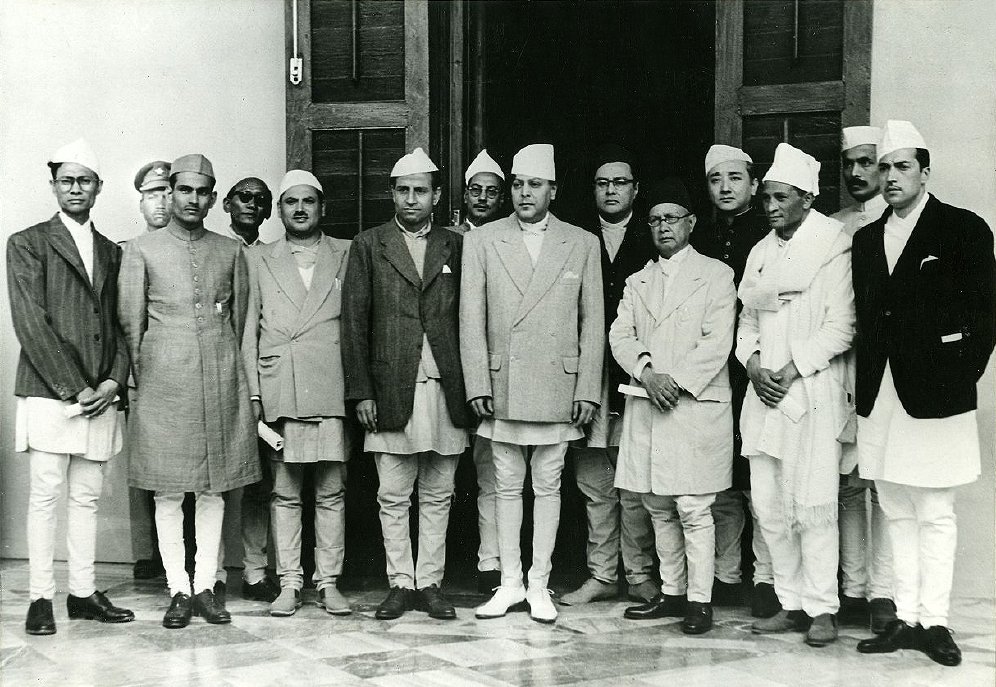On 6 October 1950, the Chinese army invaded eastern Tibet. During the following weeks also the events in Nepal happened in a rush. One important factor that decisively contributed to the final success of the oppositional forces, was the active participation of King Tribhuvan. The king’s anti-Rana attitude had been an open secret for long in Kathmandu, at least since his involvement in the conspiration of the Nepal Praja Parishad in 1940. He was forced to go to India for medical treatment from time to time and he had used his stays there to get into contact to the oppositional groups living in the Indian exile.
In September 1950, during the Indra Jatra, the Nepali Congress had planned a military coup, in course of which the king should have been brought to western Nepal in order to introduce constitutional monarchy in Nepal under the leadership of King Tribhuvan. These plans were supported by King Tribhuvan. But they were detected by the Ranas at the last moment and foiled by the arrest of some important military leaders. This is also proved by the code words, which the king in summer 1950 gave to the German physiotherapist Erika Leuchtag, who was treating the king at that time.
As his predecessor in 1940, Prime Minister Mohan Shamsher tried to force King Tribhuvan to resign, but crown prince Mahendra refused to ascend the thrown. Thus the Prime Minister planned to make Gyanendra, the king’s second grandson, the new king and to ban the rest of the royal family to Gorkha.
King Tribhuvan’s clear statement for democracy confirmed the Nepali Congress in his intention to introduce constitutional monarchy. This view was also parted by the Indian government. Since the situation of the king was well known the Nepali Congress started to have his liberation army march up along the Indo-Nepalese border to fight the Ranas by force. But surprisingly, King Tribhuvan acted himself on 6 November 1950, when he and his family fled into the Indian embassy in Kathmandu under the pretext to go on a hunting trip and asked for political asylum. Only his three years old grandson Gyanendra was left back in the palace.

Mohan Shamsher made two suggestions to solve the situation. Firstly, he sent two envoys, Bijaya and Ananda Shamsher, to the Indian embassy to persuade King Tribhuvan to return, but he refused to meet them. Then the Ranas asked the king to send his oldest grandson, Birendra, back to the palace and to accept him as the new king, but this was also rejected. So, in the afternoon of 7 November 1950, the Ranas crowned the three years old Gyanendra as the new king and minted coins in his name. But all their requests to get international recognition of the new king by India, the United Kingdom, and the USA was in vain. The air link between Kathmandu and Delhi was disrupted to prevent the royal family to leave the country. Nevertheless, two Indian military planes managed to bring them to the Indian capital on 11 November 1950.
On the same day, the military upheaval started at all corners of the country. The Mukti Sena, the liberation army of the Nepali Congress, attacked from nine points, but it was defeated near Amlekhganj and Biratnagar. Another group was more successful and took Birganj. The population of the Nepalese capital was mobilized by throwing leaflets out of a plane over the Kathmandu Valley – an action that was only possible with Indian help. The more and more successful fight of the Mukti Sena lasted for about two months.
Six developments were of special importance during this time:
- the already mentioned refusal of other countries to recognize the new king, Gyanendra
- the proclamation of an independent republic in eastern Nepal by the Kiranti peoples of that region
- the break away of the C-Rana Rudra Shamsher, Bada Hakim3 of the Palpa-District, together with 1500 soldiers stationed there
- the break away of a number of young A-Ranas, who demanded the liberalization of the administration and the return of King Tribhuvan
- the unexspected high number of rallies and demonstrations in the Kathmandu valley, in which the masses took part demanding the return of King Tribhuvan and the abrogation of the Rana system
- the firm insistence of the Indian government to introduce democratic reforms in Nepal, which can be summarized as follows:
- A constitutional assembly shall be elected as soon as possible to draw up a constitution.
- In the meantime an interim government shall be formed with members of the Rana government and representatives of the people. The members of this interim government should be formally nominated by the king on suggestion of the Prime Minister, who should be a Rana.
- In interest of peace and stability King Tribhuvan should remain king of Nepal.
On 8 January 1951, under the pressure of interior and exterior circumstances, Prime Minister Mohan Shamsher agreed to accept the Indian proposals and announced the following reforms:
- General elections for a constituent assembly should be hold at least until 1952.
- Up to these elections there should be an interim cabinet consisting of fourteen members, from which seven should be representatives of the people.
- There would be an amnesty for all political prisoners.
- King Tribhuvan should return to the Nepalese throne. During the first round of negotiations between the Indian government and the Ranas in December, Mohan Shamsher had still not agreed on this last passage.
King Tribhuvan accepted these new proposals of the Ranas and on 10 January 1951, he asked the Mukti Sena to stop its military activities. The Nepali Congress was not allowed to take part in the discussions with the Ranas and so followed the king’s order only hesitantly. The party did not agree with the “Delhi Compromise”, because it did not bring the final abrogation of Rana power. Especially Kunvar Indrajit Singh,5 the leader of the Mukti Sena in the western Tarai, refused to accept the order of the party leaders and continued the armed struggle.
There was a third round of negotiations in New Delhi from 1 to 8 February 1951, in which King Tribhuvan, Nepali Congress, and Ranas reached a final agreement on an interim government under Prime Minister Mohan Shamsher. This agreement was as follows:
- The seven people’s representatives within the new cabinet are to be nominated by the Nepali Congress.
- The most important portfolios must be in the hands of people’s representatives.
- Until the first parliamentary elections, the cabinet shall be only responsible to the king.
- All reform measures are to be announced by the king.
On 15 February 1951, King Tribhuvan and the leading members of the Nepali Congress returned to Kathmandu cheered by the people.
On 18 February 1951, King Tribhuvan announced Nepal’s first steps to democracy with a historical proclamation. Since then, this day is celebrated as democracy day.
A global media for the latest news, entertainment, music fashion, and more.





